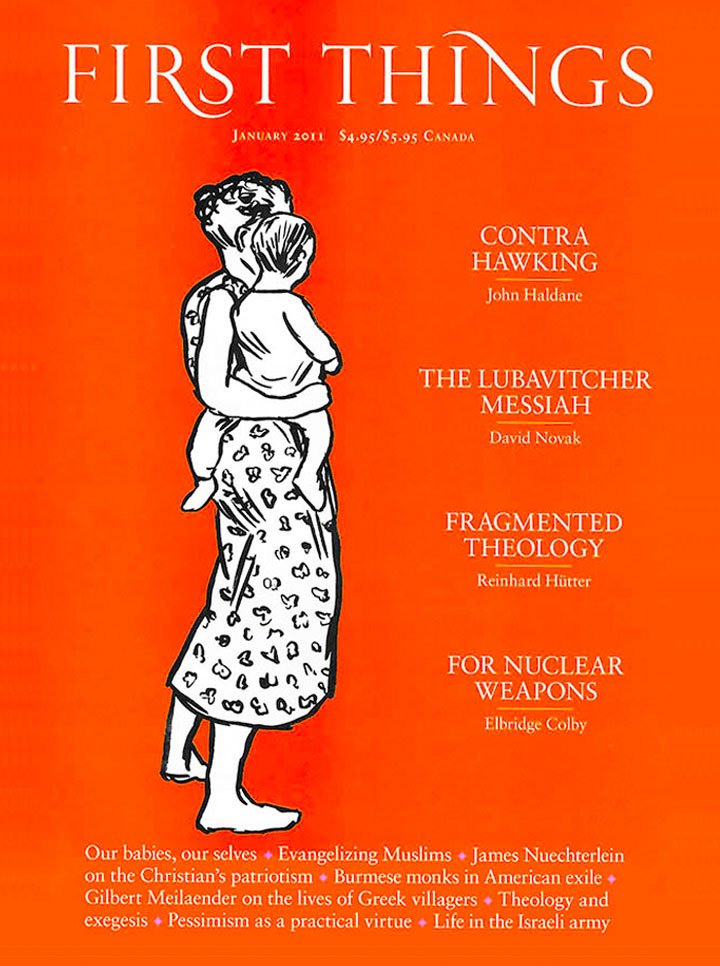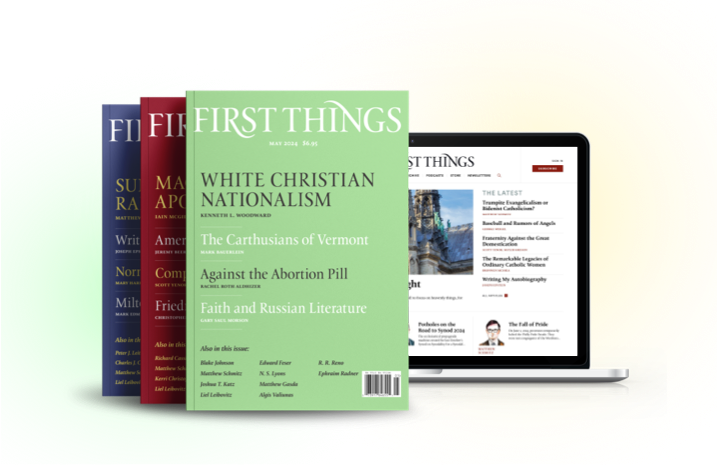Cosmos, Life, and Liturgy in a Greek Orthodox Village
by Juliet du Boulay
Denise Harvey, 462 pages, $45
n
In 1974 Juliet du Boulay pub-lished Portrait of a Greek Mountain Village , an ethnographic study of the Greek mountain vil-lage, Ambeli, whose inhabitants’ manner of subsistent living was embedded deeply in nature and the cycle of the seasons. Her study was based on two periods of fieldwork (1966“68 and 1970“72). Now, many years later, she returns to these materials with a further aim: to examine how the local customs and way of life of the villagers are shaped by religion (in particular, by the liturgy of the Orthodox Church) so that the faith forms a culture.
It may not be wrong to say that du Boulay carried out her fieldwork just in time”that is, while villages such as Ambeli “were still vibrant working com-munities living almost entirely off their own land.” But, as she notes in her Introduction, the villagers at that time were on the cusp of deep and profound changes, so much so that “much of the way of life re-counted here can no longer be found.” What the wars of the twentieth century were unable to do”namely, to “alter the deeper ideas and values” that shaped village life”other forces began to accom-plish.
A younger generation has begun to leave the village, and, more important still, the people’s way of life is increasingly being shaped not by their own traditional modes of thinking but by the “outside world, which is more and more making the villagers’ choices for them,” characterizing what counts in new and different terms. The traditional cosmology of the villagers that du Boulay ex-amines so exhaustively here has been challenged by events from outside”causing them, on the one hand, to be reluctant to articulate and defend their received understandings, and, on the other hand, to doubt the truth of (for example) reports of moon landings. New roads have brought the possibility of commuting to work elsewhere, mechanized techniques for farming inevitably altered the shape of life (with 1973 being the last year that animals were used for threshing), and the village has begun to be-come a place to which outsiders come for vacations or to spend the summer. Whether we should regret this, and whether it suggests anything inherently unstable in such a traditional way of life, is a matter worth pondering, but du Boulay for the most part eschews such questions. It is clear, though, that when many aspects of life become matters for individual choice rather than “givens” of a cosmological order, the effects for life and faith must be considerable.
Du Boulay explores different aspects of village life and belief in rich ethnographic detail. This is not the Greece we may picture as the birthplace of reason; indeed, the villagers’ form of life is one for which philosophic reason may prove subversive. Du Boulay focuses, for example, on matters such as the villagers’ cosmological beliefs, their under-standing of work and marriage, their vision of death, the place of saints and ascetic monks. In every case she seeks to bring to the customs of village life an interpretive framework shaped by the Orthodox liturgy, although she notes on a number of occasions that the people of the village “absorb the essence of the liturgical offices even while they are not able to understand word for word what is being said.” If the villagers’ life is not that of students of Plato or Aristotle, it is also not that of the Cappadocian Fa-thers. It is more habit than reflection.
Nonetheless, the religious vision that permeates vil-lage life is rich and deep. That God has become incarnate in Jesus means that human life (in all its mate-riality) cannot be entirely alien to God. Rather, every aspect of our lives”of the villagers’ lives”is drawn up into Christ and transformed by his Spirit. Hence, although the villagers have little acquain-tance with texts about and interpretations of icons, du Boulay believes that they understand well the theology of the icon, which is not a likeness of an absent God but a revelation of the God to whom human flesh is not foreign. Without reading or being equipped to understand discussions of transcendence and immanence, the villagers “know well the difference between veneration (treating an object as partaking in the qualities of the holy person it represents) and idolatry (treating an object as divine in itself) . . . . Thus, what is particular, limited, and material can partake in what is eternal, unlimited, and spiri-tual.”
Although du Boulay’s discussion of different aspects of village life is too full to lend itself to summary, one nice example of how she thinks faith forms culture in the village may be useful. In a chapter on “Work and Bread” she examines in detail the hard labor of men (chiefly on the land) and women (chiefly in the house) that is needed to sustain life. That this labor is carried out under harsh conditions”that only in sweat of our brow do we eat bread”is to be expected in a world distorted by sin. Yet, even apart from any religious belief about the redemption or elevation of our work within the Body of Christ, du Boulay depicts villagers who have a certain conception of the nobility of their work”and, we might add, a theory of “alienated labor” that surely does not depend on having read Marx. They place a “persistent value” on growing their own wheat to make bread for their own homes. This is, in their view, better than “earning cash and buying bread,” which, though possible, would lose an essential link in “the many-stranded relationship between God, man, and the world.”
But, of course, there is more significance than just this to the work that eventually produces bread. In the Eucharist that bread becomes the body of Christ, which in turn is the one body of all who share in it. And in that feast the sheer labor of subsistence living is redeemed from dhouleia (work as slav-ery) and transfigured into leitourgia (the shared work that serves God). In the eucharistic lit-urgy the harsh labor of a world distorted by sin is taken up into the life of God and transformed into a feast of victory and reconciliation. Thus, the shared labor of village life, the sharing in the eucharistic meal, and that meal’s sharing with the host of heaven before God all come together in a way of life that unites the earthly and the cosmic in a culture shaped by faith.
Surely, there is much about the life of these Ambeli villagers that is attractive, even if few of us would survive for long the rigors of the world du Boulay depicts. To be located, to have a sense of place”and, especially, to have that sense in a place that unites earth and heaven in one cosmic vision that is liturgically enacted”must surely make life meaningful in ways hard to duplicate in other settings. No wonder Rousseau was given to rapture when describing the life of honest peasants, though he was less drawn to specifically religious beliefs. That we find this village life attractive does not mean we cannot understand why a younger generation, given alternatives, might decide to leave the village and take their chances with alienated labor elsewhere.
It is worth noting what is missing in the life of the villagers, at least in du Boulay’s depiction. There is a great deal of shared liturgical life, but little high culture. There is a rich vision of humanity’s place in the cosmos, but not the sort of reflection upon it characteristic of those great Greeks, Socrates, Plato, and Aristotle. There is a sense of rootedness and meaningfulness, but relatively little freedom to strike out on new paths or alter radically one’s way of life. One man’s al-ienation is, after all, another man’s freedom.
One suspects, in fact, that the recent changes noted briefly by du Boulay in her introduction may rapidly undermine village life. The life of the people of Ambeli is shaped primarily by habit, “an undefined set of assumptions . . . which is accepted without reflection.” A life that is almost all habit is extraordinarily powerful and has remarkable staying power, but, if and when it falls apart, the collapse is likely to be quite sudden. The lure of freedom is matched only by its corrosive power.
There is much food for thought in the story du Boulay tells, but the moral of the story is not that we should try to recapture a life something like that of the village she depicts. Baking bread to bring and use in our eucharistic liturgies is not even a dim reflection of what it means for the villagers of Ambeli to do so. Rather than trying to recapture symbols now lost, we need to think as best we can about how to reclaim and reshape the life we actually have so that it too can become part of a single cosmic liturgy. For, of course, if faith does not form culture, then culture will inevitably form (and undermine) faith.
Gilbert Meilaender is the 2010“2011 Re-mick Fellow at the Notre Dame Center for Ethics and Culture.
Forgiveness: A Statement by Jews and Christians
In January 2023, a group of Jewish and Christian scholars met to form a circle of study…
Reparations Should Not Trump Communion
Throughout Christian history, periods of social crisis have typically provoked an intensification of the faithful’s belief and…
You Can Take That to the Bank
Jesus labeling money “Mammon” is most curious, seeing as the Aramaic term māmōnā means “faithful,” “reliable,” “true,”…


